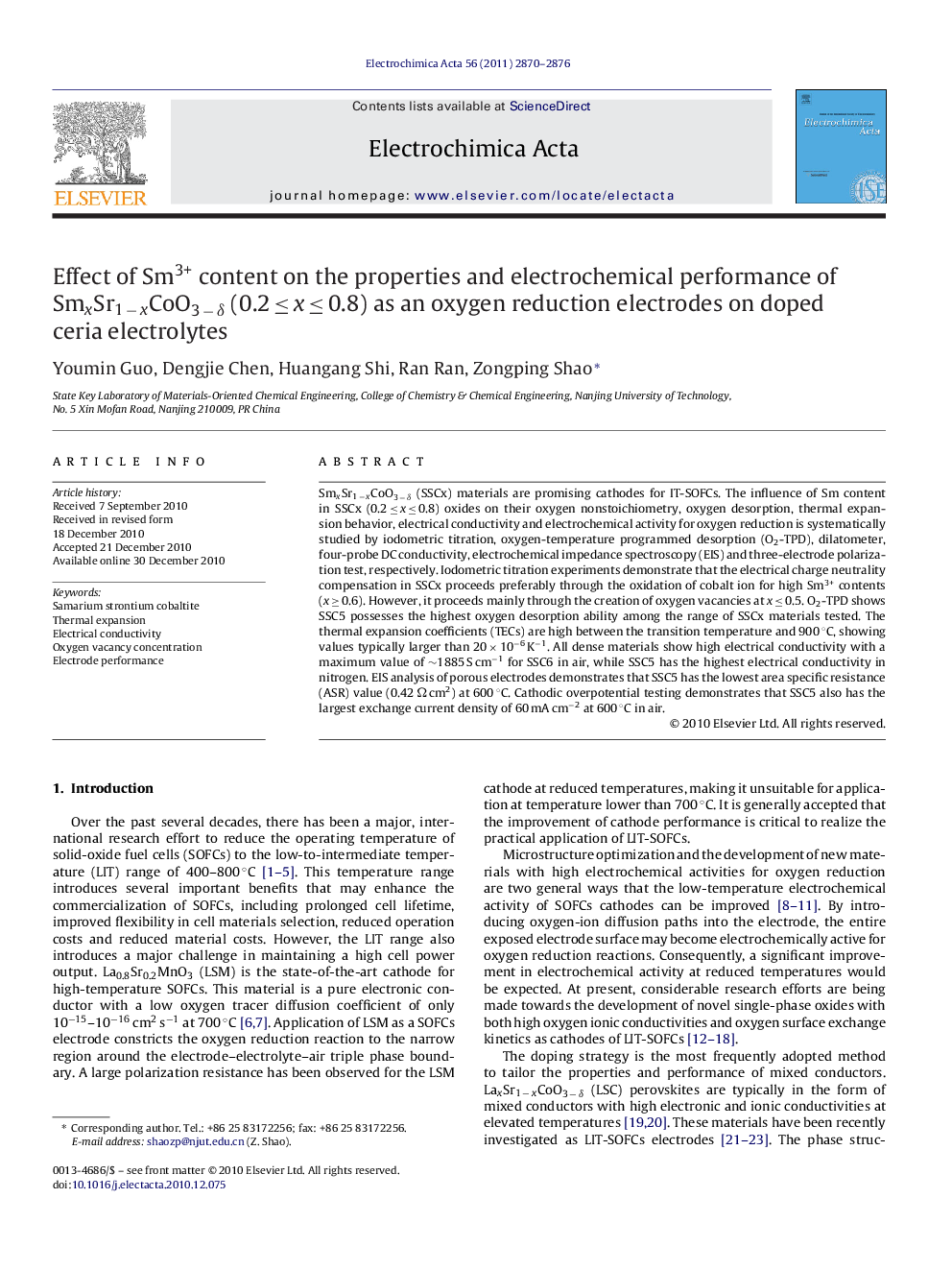| Article ID | Journal | Published Year | Pages | File Type |
|---|---|---|---|---|
| 10268997 | Electrochimica Acta | 2011 | 7 Pages |
Abstract
SmxSr1 â xCoO3 â δ (SSCx) materials are promising cathodes for IT-SOFCs. The influence of Sm content in SSCx (0.2 â¤Â x â¤Â 0.8) oxides on their oxygen nonstoichiometry, oxygen desorption, thermal expansion behavior, electrical conductivity and electrochemical activity for oxygen reduction is systematically studied by iodometric titration, oxygen-temperature programmed desorption (O2-TPD), dilatometer, four-probe DC conductivity, electrochemical impedance spectroscopy (EIS) and three-electrode polarization test, respectively. Iodometric titration experiments demonstrate that the electrical charge neutrality compensation in SSCx proceeds preferably through the oxidation of cobalt ion for high Sm3+ contents (x â¥Â 0.6). However, it proceeds mainly through the creation of oxygen vacancies at x â¤Â 0.5. O2-TPD shows SSC5 possesses the highest oxygen desorption ability among the range of SSCx materials tested. The thermal expansion coefficients (TECs) are high between the transition temperature and 900 °C, showing values typically larger than 20 Ã 10â6 Kâ1. All dense materials show high electrical conductivity with a maximum value of â¼1885 S cmâ1 for SSC6 in air, while SSC5 has the highest electrical conductivity in nitrogen. EIS analysis of porous electrodes demonstrates that SSC5 has the lowest area specific resistance (ASR) value (0.42 Ω cm2) at 600 °C. Cathodic overpotential testing demonstrates that SSC5 also has the largest exchange current density of 60 mA cmâ2 at 600 °C in air.
Related Topics
Physical Sciences and Engineering
Chemical Engineering
Chemical Engineering (General)
Authors
Youmin Guo, Dengjie Chen, Huangang Shi, Ran Ran, Zongping Shao,
